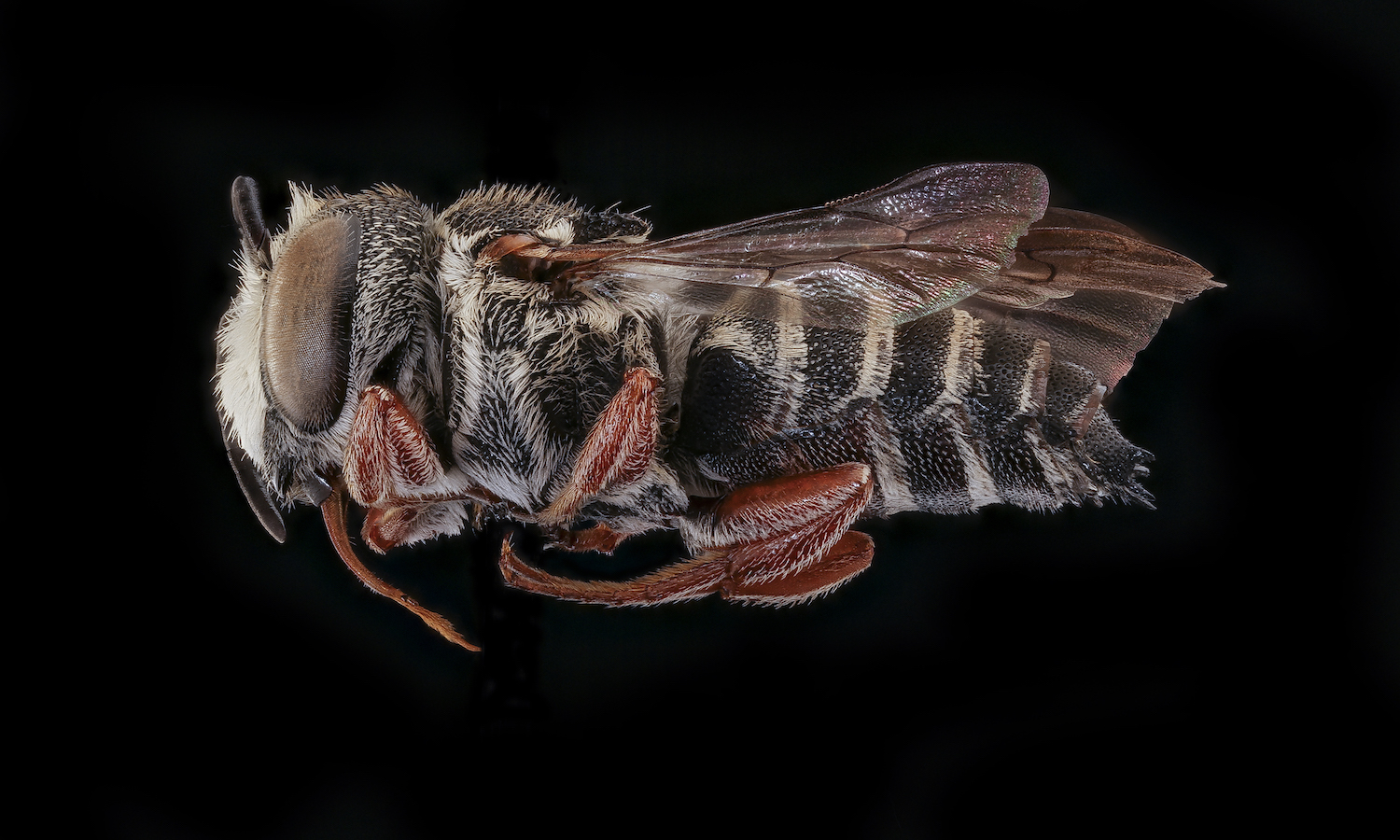What an average person knows about bees would not go far in a trivia contest. Most people don’t know that honeybees were imported from Europe to what would become the United States in the early 1600s for honey, wax, medicinal pollen, and extra income on smallholder farms. Most eaters also don’t realize that thousands of native wild bees help to sustain our food supply.
“There are around 4,000 native bees in America that don’t create honey and don’t sting: tiny bees the size of a grain of rice. And they are important pollinators,” says U.S. wildlife biologist Sam Droege. He leads the U.S. Geological Survey Native Bee Laboratory.
Agricultural policies and world goals to end hunger focus on increased production but don’t yet adequately protect wild pollinator habitat. “Lack of knowledge about wild bee species diversity, habitat, and wild bee contribution to agriculture is a blind spot in conservation and public policy,” says Droege.
With that in mind, Bee-cologist Preeti Virkar of North Eastern Hill University in Meghalaya-India recently published a baseline bee census for the temperate Doon Valley at the foothills of the Himalayas in India. She identified 43 non-honey producing bee species living within, around, and between the valley’s wild areas and agricultural fields.
What Virkar observed mirrors studies of bees in the U.S. and Europe. The most diverse bee communities live in or near forests and wilderness. These bustling, natural havens sustain vast numbers of wild and often rare non-honey-producing (non-apis) bee species. The next most diverse bee communities lived in agricultural zones where farmers grew several kinds of crops. She found the smallest number of bees, and the lowest diversity of bee species, in agricultural areas where farmers grew just a single crop.
“Here in India, farmers are encouraged to use biofortified or GMO crop seeds and to maximize food production and efficiency in large single-crop fields. But that is not good for wild bee populations,” says Virkar.
Throughout the project, she spoke with growers across the valley. “Farmers were surprised when I told them about the large communities of non-honey-producing bees in the area,” she says. “They had little awareness of any but honey bees.”
In the 1990s, the widely-reported honey bee colony collapses in the U.S. and Europe captured public attention. A proliferation of “save the bees” efforts emerged, ranging from nonprofit education and advocacy campaigns such as Greenpeace’s Bees in Decline to personal philanthropy outlets such as Heifer International’s bee colony program to socially-conscious businesses donating a portion of proceeds to conservation.
“The Save the Bees movement has been frustrating in some ways. It should be Save the Flowers,” says Droege. Wild honey bees, managed bee colonies, bumblebees, and wild non-honey-producing bees are the top five pollinators in agriculture.
“It takes about five flowers to produce the nectar needed for a single young bee. Floral biodiversity supports diverse bee species. Many specialized native bees feed only on specific flowering plants,” Droege explains.
Bee knowledge needs to bridge policy areas such as urban development, agriculture, environmental conservation, and transportation, Virkar and Droege agree.
Droege looks at cities and roadsides, driveways, home designs, and especially single plant row crop agriculture, as problematic. Even the edges of agricultural fields have become too human-focused.
“These environments could all be bee and pollinator habitats, but we have over-simplified the natural plant diversity,” Droege says. Nature loves variety, while humans desire an aesthetically neat and tidy look. Clumps of flowering native plants look messy compared to clean-cut lawns and groupings of a single flower.
“Think about the huge swaths of ground used for power lines. We blast it with herbicides so that all you get is grasses,” Droege describes. “That meets certain criteria for access, business, and a visual aesthetic, but it eliminates the native flowering plants that bees need for food. All the wildflowers are gone. Roadsides become biological deserts. But we need interconnected, flowering corridors.”











